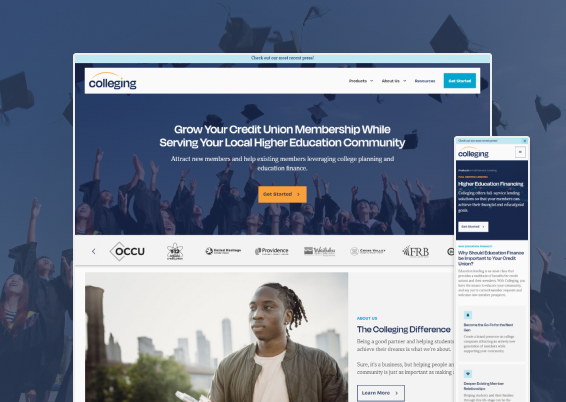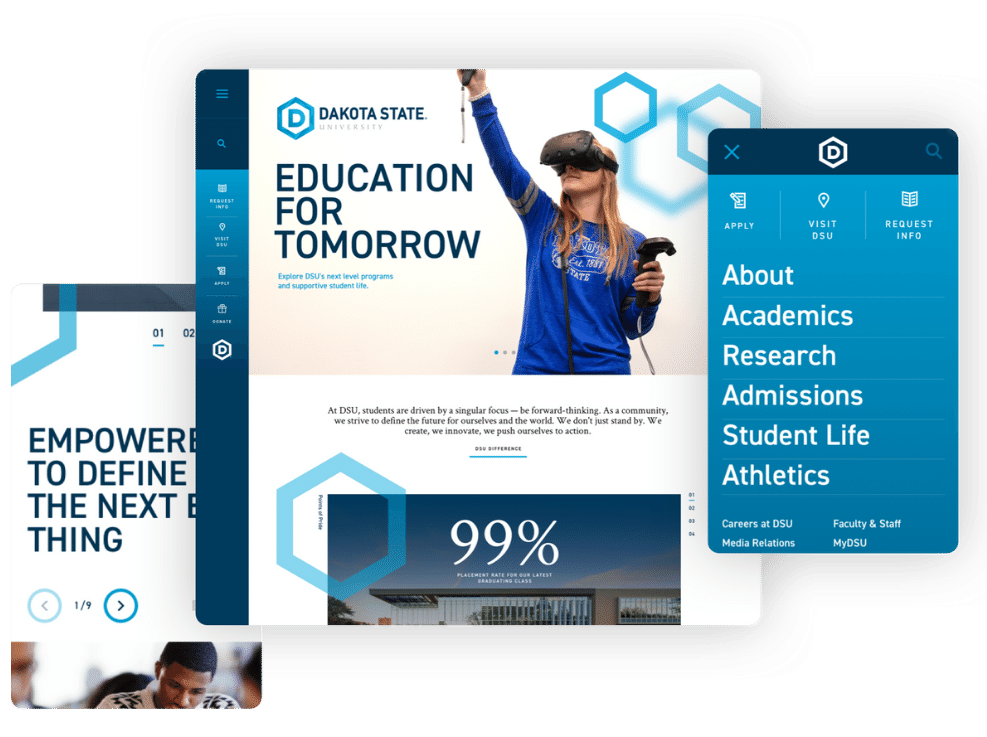Exactly How Website Design Impacts Customer Interaction
The Power of User-Centered Internet Site Layout in Expanding Your Online Audience
In a progressively competitive digital landscape, the significance of user-centered web site layout can not be overstated. By concentrating on the needs and actions of customers, companies can create websites that not just bring in yet additionally engage a varied audience. Effective layout principles-- such as intuitive navigating and access-- are necessary in cultivating individual fulfillment and commitment. Understanding how to take advantage of these concepts successfully elevates important concerns about execution and influence. What approaches can organizations adopt to ensure their styles reverberate with customers and eventually drive development?

Understanding User-Centered Style
User-Centered Style (UCD) is an essential strategy to web site development that focuses on the demands, choices, and habits of end customers throughout the design process. This method highlights recognizing customers deeply-- with study techniques such as meetings, studies, and usability testing-- to produce a site that reverberates with them. By integrating customer comments at every stage, developers can guarantee that the end product straightens carefully with user assumptions.
UCD advertises repetitive layout, where models are checked and refined based on individual interactions and experiences. This cycle not only boosts usability however likewise promotes a feeling of ownership among customers, as they feel their input is valued and impactful. Additionally, UCD assists determine potential obstacles and pain factors in the customer journey, permitting developers to deal with these challenges proactively.
Eventually, welcoming UCD results in web sites that are extra intuitive, engaging, and reliable. By placing customers at the center of the design process, organizations can develop electronic experiences that not just bring in but additionally retain their target market, driving better contentment and loyalty. In an affordable on-line landscape, this method is necessary for achieving continual success.
Key Principles of Customer Experience
A successful customer experience (UX) depends upon several key concepts that direct the design process and improve communication between customers and the website. First and leading, use is extremely important; the website needs to be user-friendly, permitting users to navigate quickly and discover information quickly. This includes clear labeling and a rational structure that minimizes cognitive lots.
Secondly, accessibility plays a crucial role in making sure that all users, despite their abilities or disabilities, can effectively involve with the site. Integrating alt text for images, key-board navigating, and display visitor compatibility fosters inclusivity.
Consistency is another essential concept. A cohesive style language, from shade schemes to typography, helps users build knowledge and trust with the internet site (Website Design). It likewise strengthens brand identification
In addition, responses devices are crucial. Customers should receive clear and immediate reactions to their activities, whether via aesthetic signs or confirmation messages, which improves their self-confidence in navigating the site.
Lastly, mobile responsiveness can not be ignored. With a boosting variety of users accessing websites by means of smart phones, a style that adapts flawlessly to numerous display dimensions is critical for preserving a positive customer experience.

Advantages for Online Engagement
Efficient online involvement supplies many advantages that can considerably improve a website's general efficiency - Website Design. By promoting purposeful communications in between customers and the internet site, organizations can grow a dedicated audience that returns with consistency. Involved customers are more probable to share web content, consequently increasing natural reach and attracting new visitors via word-of-mouth promo
Improved online involvement also leads to boosted user satisfaction. When customers locate an internet site that resonates with their needs, they are a lot more likely to explore its offerings extensively, which can bring about greater conversion prices. In addition, interesting web content urges individuals to invest more time on the website, reducing bounce prices and positively affecting online search engine ranking algorithms.
Furthermore, reliable interaction offers important understandings into customer choices and habits (Website Design). By assessing individual interactions, organizations can customize their content and style approaches to fulfill the developing expectations of their target market. This flexible strategy not only enhances involvement however also reinforces the brand's credibility as user-centric and responsive
Eventually, focusing on online engagement via user-centered design creates a thriving environment where both the target market and the organization benefit, causing continual growth and success in the electronic landscape.

Methods for Effective Design
To take full advantage of the benefits of online engagement, employing certain techniques in website design is vital. Initially, instinctive navigating is essential; individuals must easily locate info without complication. A well-structured food selection, clear tags, and a logical pecking order improve the customer experience and decrease bounce rates.
2nd, responsive design is critical in today's multi-device environment. Ensuring that a site adapts seamlessly to numerous screen dimensions cultivates availability, consequently fitting a broader audience. This adaptability not just improves user contentment but likewise positively affects internet search engine positions.
Third, the usage of visual hierarchy guides users' interest to essential elements, such as contact us to action (CTAs) Using contrasting shades, differing font sizes, and critical spacing can successfully guide users towards desired activities, assisting in directory better interaction.
In addition, applying regular branding throughout all pages develops trust and acknowledgment. A cohesive shade plan, imagery, and typography strengthen brand name identification and develop a professional look.
Lastly, maximizing loading speeds is vital. Users are much less likely to involve with a slow-loading website, making efficiency optimization an important facet of effective style. By including these methods, web site designers can enhance individual experience and eventually expand their online target market.
Real-World Success Stories
Success tales in user-centered web site design illustrate the tangible advantages of focusing on individual experience. As an outcome, they experienced a more information 250% increase in online contributions, demonstrating exactly how an instinctive style can drive user engagement and assistance.
Another compelling instance is that of Airbnb, which used user-centered design principles to enhance their booking process. By simplifying the user journey and incorporating individualized recommendations, they substantially minimized website abandonment prices. This emphasis on individual experience added to a revenue development of over 70% in a single year, emphasizing the relationship between properly designed interfaces and economic success.
Furthermore, the e-commerce giant, ASOS, applied individual screening to refine their mobile application. By dealing with user discomfort points, they attained an exceptional 30% rise in mobile sales. These examples highlight that buying user-centered style not just enhances individual fulfillment but also drives concrete organization results, strengthening the essential function of user experience in attaining on the internet development.
Verdict
By prioritizing customer requirements and preferences, businesses can produce obtainable and instinctive digital experiences that cultivate commitment and drive conversions. The integration of individual feedback throughout the layout procedure not only lowers bounce rates but also encourages exploration.
User-Centered Layout (UCD) is a fundamental approach to web site development that focuses on the needs, preferences, and behaviors of end users throughout the style process. By integrating user feedback at every stage, designers can ensure that the final product straightens carefully with user expectations.
An effective a fantastic read individual experience (UX) hinges on several crucial principles that guide the design process and improve interaction in between customers and the internet site.Success tales in user-centered website design show the tangible advantages of prioritizing customer experience. These examples highlight that investing in user-centered design not just boosts user satisfaction but additionally drives tangible organization outcomes, reinforcing the important role of customer experience in attaining online development.